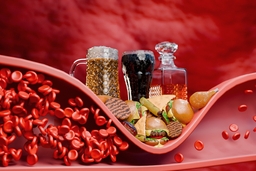Red Meat vs White Meat: Which Is Healthier?

What do steaks, kebabs, beef burgers, rendang, satay, meatballs, corned beef, and sausages all have in common? Yes, the main components are the same: meat. People could categorize them as red meat and white meat. But which of these is the healthier option?
When it comes to eating meat, red meat is often avoided. It has been claimed that because red meat contains more cholesterol, white meat is preferable because it contains more protein. However, research shows that red meat is a good source of protein, vitamins, and minerals for the body. Red meat consumption should be limited to 50-70 grams per day, or 350-500 grams per week.
What is red meat?

The red hue of raw meat is caused by a high concentration of myoglobin, a type of dark red protein found in the flesh. The more myoglobin there is in the flesh, the redder the color. This category of red meat includes beef, goat, rabbit, and lamb.
Red meat also includes several minerals, such as vitamin B12 and iron, which aid in the production of new red blood cells. Red meat is high in protein, which is necessary for the formation of muscles, bones, other tissues, and enzymes.
Red meat has higher saturated fat than white meat. This saturated fat has the potential to raise blood cholesterol levels and cause several types of cancer, kidney problems, digestion issues, and even death.
Excessive red meat consumption has also been related to an increased risk of cardiovascular disease, colorectal cancer, type 2 diabetes, and Alzheimer's.
If you enjoy red meat, consider fresh rather than processed. Fresh red meat should have a vivid red color, a dense texture, be robust and chewy, and not smell rancid.
Meanwhile, processed red meat has gotten numerous additions, such as additional salt, fat, or preservatives. These components are typically added during curing, pickling, or salting. Consuming processed beef raises the risk of colon (colorectal) cancer.
Red meat storage must also be examined so that it does not become contaminated with microorganisms that can make it harmful. Always keep cooked and raw red meat separate. It is advised that cooked meat be reheated only once.
Knowing how to prepare red meat is important for staying healthy. Frying red meat raises the saturated fatty acid level.
What is white meat?

White meat has a pale tint both before and after cooking. The lighter color is usually seen on the breast. White meat is considered healthy due to its low fat and protein content.
White meat is included in the poultry category. Chickens, birds, and ducks, for example. Fish, clams, shrimp, lobsters, and crabs are examples of marine animals in this category. If you wonder about "extreme" dishes like snakes and monitor lizards, well, they're also in this group.
Aside from protein, white meat contains calcium and phosphorus, which improve bone, tooth, liver, kidney, heart, and nervous system health. Eating white meat can help you avoid osteoporosis and arthritis. White meat contains vitamin B2, which can help with skin problems including sore tongues and chapped lips and revitalize dry and damaged skin. Vitamin B6 protects enzymes and blood vessels, keeps energy levels high, and strengthens metabolism.
White meat contains vitamin D as well. Its function is to aid in calcium absorption. White meat contains phosphorus, which aids in bone health, brain function, dental care, and metabolic function. Skin elimination is recommended for low-fat diets. All white meat is high in protein, which is healthy for bones, nails, hair, and natural hormones.
White meat has low saturated fat and cholesterol, which helps minimize the risk of heart disease. Cooking white meat by boiling or grilling reduces the fat content.
However, it is not only the type of meat that is important but also the whole diet. It is critical to consume a range of protein sources and maintain a nutritional balance in the daily diet. Choosing low-fat meats, limiting your consumption of processed meats, and complementing them with other healthy food options such as vegetables, whole grains, and fruit are all key steps toward good health.
If you have specific health concerns, you should visit a doctor or nutritionist for more specific recommendations, or click on WhatsApp.



